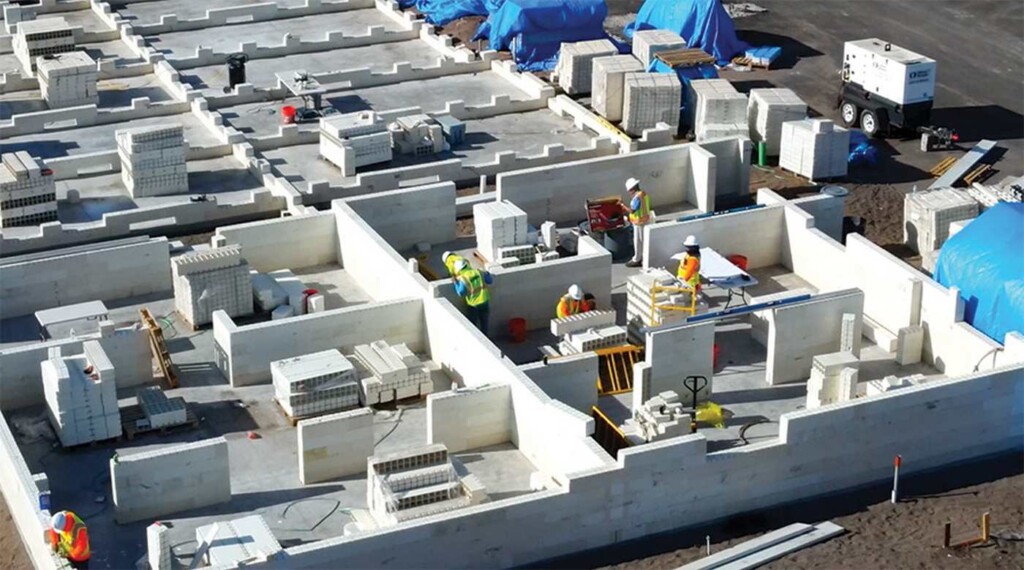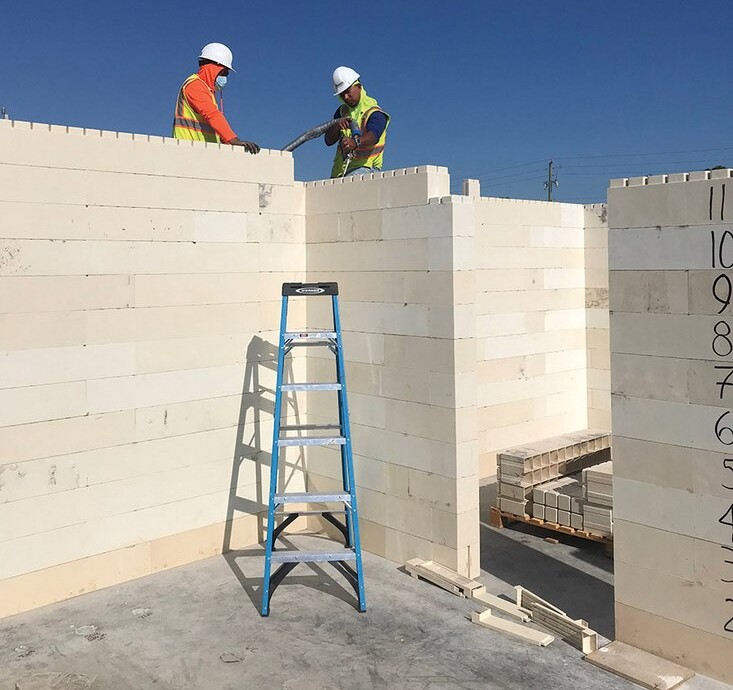
A Florida construction firm is seeing fast adoption of its intuitively-made building blocks that work like real-life LEGO bricks.
The interlocking blocks made of a mineral composite and reinforced with glass fiber can be quickly and quietly assembled into walls, floors, and even roofs, with a special adhesive and a rubber mallet being the only tools workers need to get the job done.
By using a process similar to injection molding, Renco USA can take the material and turn it into a variety of shapes, from the standard LEGO bricks to roofbeams and joists. No heavy cutting, welding, or masonry is needed on the job site, and contractors installing plumbing, ventilation, or electrical work can treat the finished block walls like normal concrete.
In Palm Springs, a $21 million, 96-unit housing complex near West Palm Beach is being built by just 11 workers using the blocks and adhesive. Without any cranes or lifts, and no bench saws or metal cutting equipment, the neighbors heard only the muted thud of the rubber mallets.
According to industry reporters, ongoing labor shortages and volatile markets in both steel and concrete are making America’s go-to building strategy for over 100 years more and more difficult to budget for.
Renco’s building system combines standard materials from other industries, like methyl methacrylate glue used in heavy vehicle manufacturing, and recycled glass fiber to reinforce the stability of supply chains and make costs lower and more predictable.
MORE NEWS LIKE THIS: These Lego-Like Bricks Make Building a Raised Garden Bed a Snap
“We worked on this [system] for more than 10 years,” Renco co-founder Tom Murphy, Jr. told Engineering News Record. “We had to keep changing it to make it better and easier to work with. As we did that, making a building with it got faster and easier, and… the building got stronger each time.”
Importantly for Florida weather is that early adoption tests show the blocks are incredibly durable and exhibit properties typically associated with the longest-lasting building materials.

They’re rated to withstand wind speeds of 275 mph, and because of a naturally-occurring resin used in the injection molding of the blocks, they wick moisture away rather than absorbing it. They’re even insect repellent. A test saw a section of blocks put into a terrarium with a queen termite and 99 males. A month later the block stood alone amid the dead insects.




